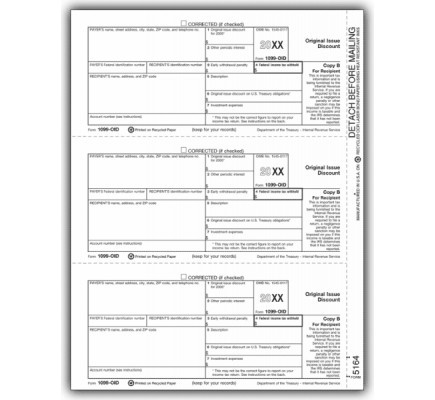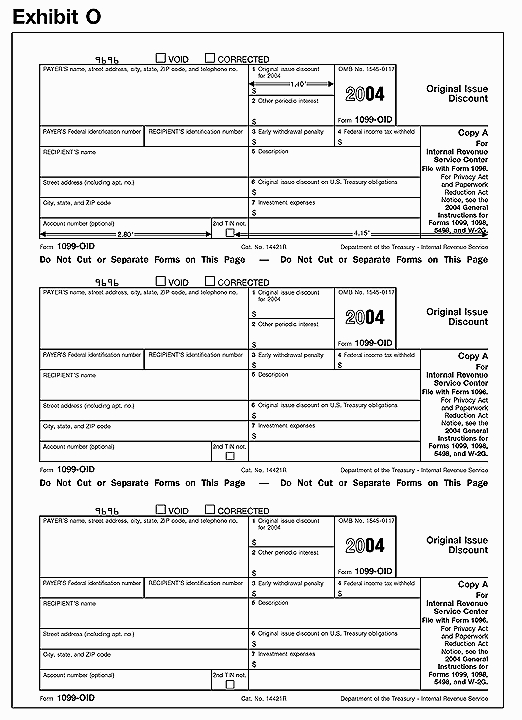Original Issue Discount (OID)
Post on: 31 Июль, 2015 No Comment

Original issue discount (OID) refers to a debt instrument initially issued at a price substantially below its face amount (i.e. at a deep discount). OlDs can also be bonds issued as zero coupon bonds. A zero coupon bond (also referred to simply as a zero) has no stated or coupon interest rate and therefore pays no periodic interest. Non-zero deep discounted bonds are priced well below par at issuance but have regular semiannual or annual interest payments based on their stated interest rate.
BACKGROUND
In the late 1970s and early 1980s, interest rates were at historic highs. In an attempt to reduce their periodic cash outflows for interest, borrowers, both corporate and governmental, began issuing bonds carrying very low stated or coupon interest rates relative to those prevailing in the marketplace. During the 1980s many leveraged buyouts were financed with deep discount bonds of questionable creditworthiness and earned the name junk bonds. These bonds are now called "high-yield" bonds.
The U.S. Treasury has been selling zero coupon bonds for many years in the form of Series EE U.S. savings bonds. For example, a $25 investment in a U.S. savings bond can return $50 at its maturity with no periodic interest payments. The interest return to the investor is implied in the difference between the deep discounted price ($25) and the maturity value of the bond ($50). The U.S. Treasury adjusts their yield by changing the time to maturity.
By 1982 the popularity of zeros encouraged the U.S. Treasury to allow U.S. government securities dealers to strip the semiannual interest coupons from a group of bonds, and to sell blocks of same-maturity coupons and principal to investors as a zero coupon bond derivative (ZCBD). Broker/dealers developed portfolios of ZCBDs bearing the name of aggressive, coy animals:
- LIONs: Lehman Brothers' Lehman Investment Opportunity Notes
- TIGRs: Merrill Lynch's Treasury Investment Growth Receipts
- CATS: Salomon Brothers' Certificate of Accrual on Treasury Securities
In 1985 the U.S. Treasury began issuing notes and bonds tailored as zeros known as Separate Trading of Registered Interest and Principal Securities (STRIPS).
Municipalities also worked zeros into their debt structures. The high interest rates during the 1980s made it almost impossible to issue municipal bonds. The Tax Reform Act of 1986 lowered the maximum tax bracket to 33 percent, making the tax-free aspects of municipals less attractive. In the face of high debt costs, declining demand, and decreasing bond ratings, municipalities began issuing zeros with U.S. Treasury-backed zeros as collateral.
PROS AND CONS OF OIDS
There are advantages of OIDs and zeros for both issuers and investors and a distinct tax disadvantage for the investors. The tax effects are discussed below.

ISSUERS.
The major advantage to an issuer is that because of the lower coupon or stated interest rates, the issuing firm's periodic interest payments are considerably smaller than would otherwise be the case. Another advantage to the issuer is that OlDs tend to carry original yields to maturity that are less than those of similar quality non-OID bonds. One major disadvantage is that OIDs, especially zeros, are rarely callable. This effectively prevents the issuer from taking advantage of lower market interest rates by calling in an outstanding issue. Another disadvantage is the very large cash outflow required at maturity compared to the original proceeds of the issue (but, of course, the firm didn't have to make all of the usual periodic interest payments).
INVESTORS.
OIDs, whether purchased at issue or in the secondary market, are convenient and affordable in that they require a low initial investment and provide an implied automatic reinvestment of interest. There are some special tax rules, however. Investors are also attracted to deep discount or zero coupon bonds because they have very little reinvestment rate risk. One of the problems facing an investor in securities that pay periodic returns to their holders (either dividends or interest) is how to reinvest those payments in instruments yielding at least as much as the anticipated yield to maturity of the original security. When interest rates are declining, this becomes an increasingly difficult task. By purchasing a zero coupon bond, an investor eliminates this problem because there are no periodic interest payments. Therefore, there is no reinvestment rate risk.
Aside from the adverse tax ramifications discussed below, the major disadvantage of an OID is that because of its very low interest rate relative to the prevailing market rate, the price volatility of these instruments is much greater than traditional debt instruments (see illustration).
PRICING AND YIELDS
The pricing of a zero coupon bond is a straightforward present value computation. It is simply the present value of the face amount of the bond discounted for the time remaining to maturity at the prevailing market rate of interest for bonds of similar risk. For example, assume a 20-year, $10,000 face value zero is issued in a market demanding a 7 percent yield to maturity, compounded semiannually. Its price would be 0.2526 of par, or $2,526, plus commissions. Investors purchasing at that price are able to lock in a compounded rate of interest of 7 percent regardless of what subsequently happens to market rates until the bond matures. This should be recognized as a twoedged sword: an upward change in interest rates, of course, will decrease the market value of zeros and OlDs just as a decrease in interest rates will increase market value. Further, because it has no coupon rate, a zero coupon bond's price volatility, as market rates change, is substantial. And, the longer the maturity of the zero, the greater that volatility will be.
Assuming market interest rates remain at 7 percent, our 7.0 percent, 20-year zero, compounded semiannually, per $10,000 face value, if held by the original purchaser, would have the values shown in Table 1.
Table 1
Value of Zero Coupon Bond














